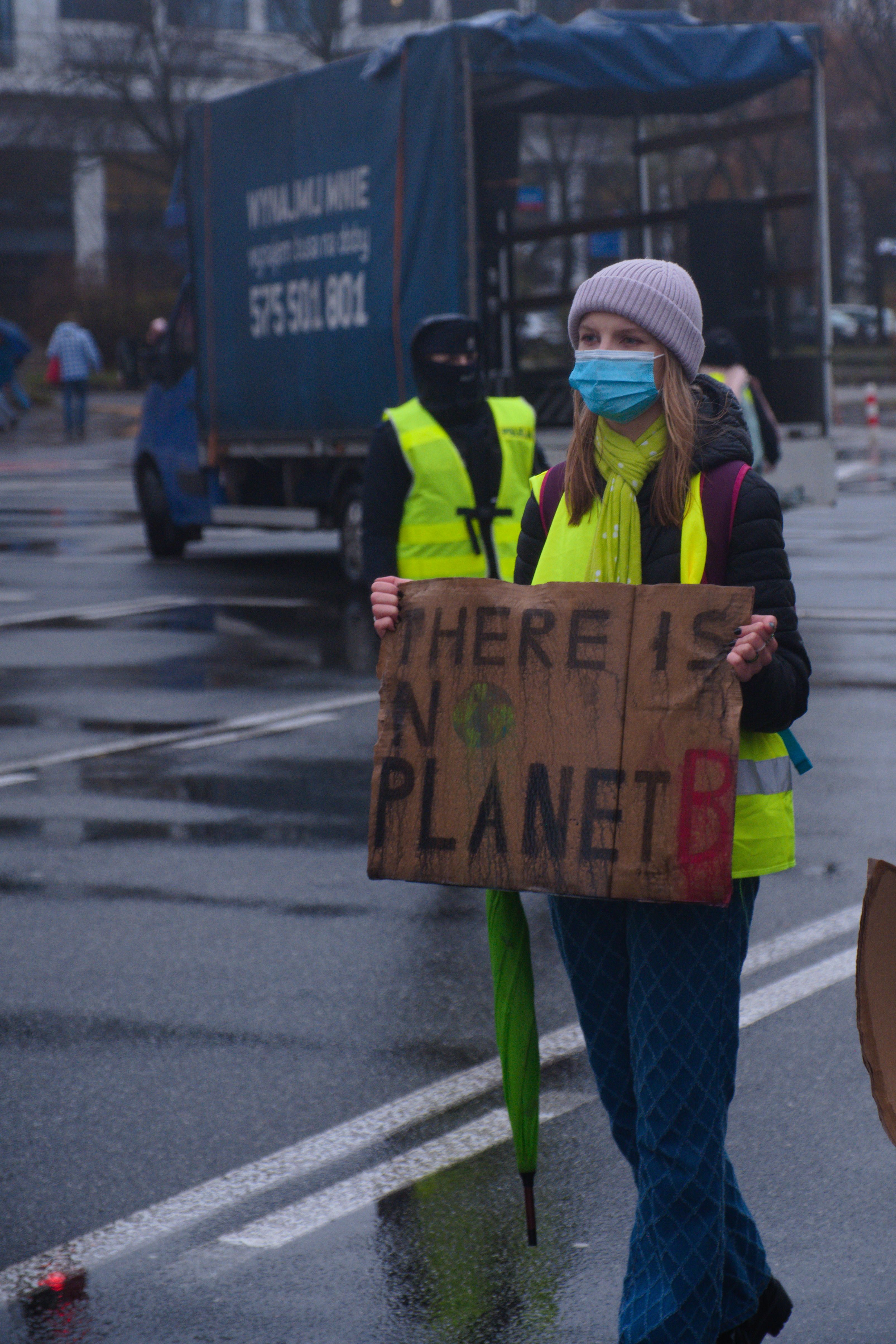Is COP26 Copping our Futures?

Gunnar Åkerlind - Authorgunnar.åkerlind@osqledaren.se

Filip Zawadka - Photographerfilip.zawadka@osqledaren.se
The effects of climate change are already felt by many and the science behind it has been clear for long, yet emissions are increasing steadily. Change is needed, agreements need to be made and organisation is of the utmost importance. As the question is global, we look towards the UN and the recent COP26.
A Tale of Coin Tosses and Private Jets
COP26; The 26th UN climate change conference in Glasgow ended after two weeks of media gold on November 13th. With the purpose of bringing “...parties together to accelerate action towards the goals of the Paris Agreement and the UN Framework Convention on Climate Change” the event brought the countries of the world together to collectively work towards solving the issue of climate change and keeping the commencing disasters minimal.
Or rather, that would be the scenario in an ideal world.
Shrouded in controversy and claims of empty words, the sincerity of the politicians’ efforts seems like symbolic theater. For example, when attending such a masquerade of the elites, what could be a better mode of transport than a private jet? Another source of heated critique is probably the most iconic picture of the event. An assembly of G20-leaders together threw coins into a fountain “ensuring return to Rome” like any other tourists, creating a theater-like scene during what should have been the most serious event of our time. So very representative of the event as a whole. But before dwelling further on COP26, we take a look into the annals of history and chronicle the landmarks leading up to our current situation.
The science on climate change has been clear for long, but just how long? As early as 1859, John Tyndall connected carbon dioxide with the ability to keep heat in the earth's atmosphere. In 1896, the Swedish scientist Svante Arrhenius published a paper describing a connection between changes in atmospheric carbon dioxide and changed global temperature. Albeit not on the level of modern understanding, these very early insights prove the fact of climate change not being a novel matter to science. The theories were further developed in 1938 by Guy Callendar and in 1956, Gilbert N. Plass published The Carbon Dioxide Theory of Climate Change, which connected the observed increase in global temperature with increases in atmospheric carbon.
With understanding of the implications of increased CO2 emissions, the matter became a political one. The landmarks turned significant in the 90s with the Kyoto Protocol being signed by a total of 192 parties. It had the promising intent of guiding society to a sustainable future. The road towards sustainability was concretely established in terms of commitment periods during which all parties would decrease their emissions, bit by bit.
In 2015, the Paris Agreement was signed by 196 parties (compared to the 192 parties of the Kyoto Protocol). With more concrete goals than the Kyoto Protocol, the global increase in mean temperature was to be kept at a minimum 1.5°C or 2.0°C compared to pre-industrial levels. These temperature thresholds were set as the limits between manageable consequences, and ones much worse. A realistic goal it seemed, with promises strengthened by the agreement’s status as a legally binding treaty. I personally remember feeling hope at the time. As I mentioned in my previous article Our Impending Futures, while growing up I was plagued by anxiety attacks over climate change and this seemingly significant political milestone became a long awaited source of respite for me.
Finally, there was a light among the dark environmental developments. As so many nations world wide joined in effort to stop the approaching disasters, surely we would soon be seeing changes for the better?
So what really happened after the Kyoto Protocol and the Paris Agreement? We look once again to the present. To put it shortly: there was change, but not for the better. Emissions have not decreased, but in fact increased continuously since the Kyoto Protocol, only decreasing briefly along with the stock market fiasco of 2008/2009 and the shutdowns of the Corona Pandemic quarantines. As the effects so long prophesied now start to shape our immediate realities, and as the trajectory hardly seems to be changing, one begins to wonder: Since these agreements have been made, why has not sufficient action been taken? Hints as to the underlying reasons can be found among two recent scandals.
The science on sustainability points to a certain systemic culprit. Or to be more precise: the very system in itself. A leaked report by the IPCC states that
“... the growth model of capitalism is unsustainable.”
Giorgos Kallis gives a more detailed explanation of why in his book Degrowth:
“We need to extract, produce and consume less, and we need to do everything differently. Growth economies collapse without growth.”
Given that the capitalist model in its very foundation depends on growth to not collapse, the statement made by Kallis is axiomatic for all capitalist societies. Capitalist economies grow by either increasing the pool of resources and labor which it exploits or by increasing the circulation of money. Money cannot circulate with infinite speed and therefore, the width of resources exploited must be expanded. The problem following this reasoning should be obvious: Capitalism’s need for infinite expansion cannot be covered by a limited world.
One need not look far to find very concrete examples: The seas now yield far, far less fish than they once used to due to constantly increasing overexploitation. The Amazon rainforest is being cleared without consideration for ecological interests or long-term sustainability. Here in Sweden, one can find a similar example by looking up north. Our Swedish forests are often branded as foundations for “green industry,” but the reality is much more complex, with the negative aspects of the forest industry much less well known than its growing role as a “sustainable resource”. The immense potential for removing carbon from the atmosphere by letting forests grow freely is often overlooked in favor of the economic interests of the landowners.
We turn to another recent scandal for clues about why there has been no change for the better. According to the BBC, leaked documents reveal that several countries lobbied to change the terminology in the IPCC report. With great economic interests in the fossil industries, Saudi Arabia, Japan and Australia are among the many who all sought to eliminate the explicit condemnation of fossil fuels, with a perfect example by the Saudi Oil Ministry:
“Phrases like ‘the need for urgent and accelerated mitigation actions at all scales …’ should be eliminated from the report.”
What all these countries have in common is their large economic dependency on and massive investments into the fossil industries, investments that will go to waste if they deviate from their polluting path. To quote Carbon Lock-In, a study of the role of pre-existing fossil infrastructure in regards to climate politics and societal adaptation:
“The current global energy system is the largest network of infrastructure ever built, reflecting tens of trillions of dollars of assets and two centuries of technological evolution.”
If the decision is left only to the capitalist market, these investments will do nothing but increase, as the incentives are much greater to preserve and profit from them. It seems that the governments of fossil-reliant countries will not work towards the urgently necessary sustainability adaptations, rather, they are an integral part of the inertia in the opposite direction. So, if global politics will not work to solve our dire problem, the question should perhaps be how to incentivise it.

On that fateful day in August 2018, when Greta first sat down outside the Swedish parliament, a new wave of climate activism began. One that would sweep across the world and take the issue of climate change to greater heights of recognition and, what’s more important, engagement. The day when Greta Thunberg sat down in front of parliament and the climate strikes began. On September 20th in 2019, the movement reached its peak with a whopping four million participants world wide. Numbers that truly could bring a change. But what can be done by only protesting? Given the continued increase in emissions world-wide and the inertia of political change, the environmental movements need to work more broadly. The chairman of SSU (Swedish Social Democratic Youth League), Lisa Nåbo, recently criticized the protests for being an ineffective means of generating change:
“The solution I see is that one instead heads into politics and takes the state power.”
She further states that if a fifth of all protesters joined the party, they alone would have the power to dictate party policies. Of course, this still presumes that the party (and others aligned) has a significant share of votes in the parliament), but the point is clear. Solely protesting without directly influencing institutions is an unrealistic way to produce change. An angry individual (or ten thousand for that matter) makes no difference for a company or a politician, unless they act upon their anger. With the copious sums of money invested in the fossil industries and given the time needed for already built infrastructure to return profit, many of the investors behind fossil fuel are unlikely to give up their locked in fortunes for “the greater good”.
With the unsatisfactory results by political (minimal) action, the movements working against climate change have broadened, the most famous contemporary example probably being Extinction Rebellion, or XR for short. Not only marching in the streets, XR has taken the struggle one step further by actions of civil disobedience. Actively blocking highly trafficked streets works to both directly stop emissions and to make a symbolic statement about the need for changing the way we live. XR has grown immensely in the last years, even causing enough commotion in the UK to be faced by military and police. Other, smaller organisations have taken direct action even further. While still remaining non-violent against people, acts of industrial sabotage or actively blocking highly emitting processes have become far more common in many parts of the world. Changing America reports that at least 41 cases of eco-sabotage in Washington were being investigated by the FBI in 2020. In Germany, the organisation Ende Gelände uses civil disobedience (just like XR), but directed towards stopping coal-mining in Germany, with several large successes. From Greta to eco-sabotage, the global action against climate change has both broadened and grown immensely in recent years. As the issue only grows more urgent, it is unlikely to stop.
As you’ve reached the end of this article, you‘ve gained a both deeper and broader understanding of the global situation (or so I hope at least), but the outside world has remained the same. The crisis grows larger by the hour. The flames, both metaphorical and real, grow higher, broader and more intense. Climate refugees, just like the spiraling threat of natural disasters, are no longer ominous predictions of the future, but facts of the present. The world needs an immediate change of path, but despite the science, the activism and increasing global awareness, the action taken is so very, very far from sufficient. As a major obstacle to a sustainable society, fossil capital is the enemy of all who wish to live in a world not on fire. To bring it down, engagement needs to become broader both in terms of means and the size of the masses. You, dear reader, are one potential weight on the right side of the scale. Engage yourself, inspire those around you, study the paths to change and strive for sustainability.
For lest we fight harder now, the struggles of the future will be so much worse.

Publicerad: 2022-01-27


